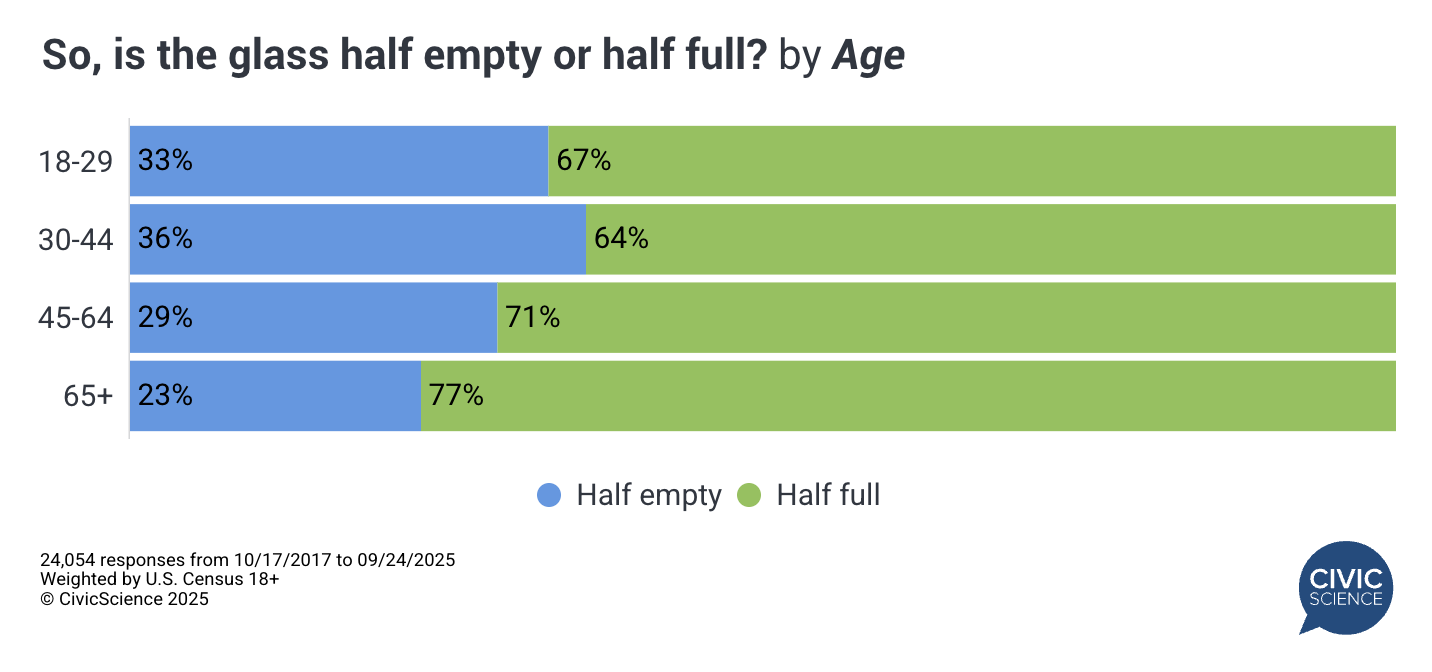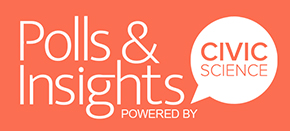It’s one of the oldest debates: is the glass half empty or half full? A new CivicScience survey shows that 70% of U.S. adults describe the glass as half full, while 30% see it as half empty.
Millennials (ages 30–44) are the most likely to say half empty, while Baby Boomers (65+) are the most likely to say half full. Men are 6 percentage points more likely than women to say half empty, though both lean toward half full overall. Income also plays a role—low-income households report the highest share of half-empty responses, while high-income households are most likely to say half full.

But demographics aren’t the only thing dividing glass-half-full and half-empty thinkers:
-
Cooking: Half-full respondents are 8 percentage points more likely to say they enjoy cooking.
-
Brand Boycotts: Half-empty respondents are 5 percentage points more likely to say they would boycott brands that support causes they oppose.
-
Water Habits: The divide extends to water itself—half-empty Americans are more likely to drink tap water, while half-full Americans tend to drink bottled or filtered water.
-
Podcasts: Half-full respondents are nearly twice as likely to listen to interview or conversational podcasts.
-
Newspapers: Half-full consumers are also more likely to read the print edition of a local newspaper.
The glass-half-empty vs. half-full question may seem simple, but it reveals more than a mindset. From cooking and media to shopping and even water choices, how people answer this classic debate connects to broader lifestyle habits.
Love taking polls? Sign up to participate in the Poll of the Day here.
This article’s data comes solely from CivicScience’s database, which contains nearly 700,000 poll questions and 5 billion consumer insights.


